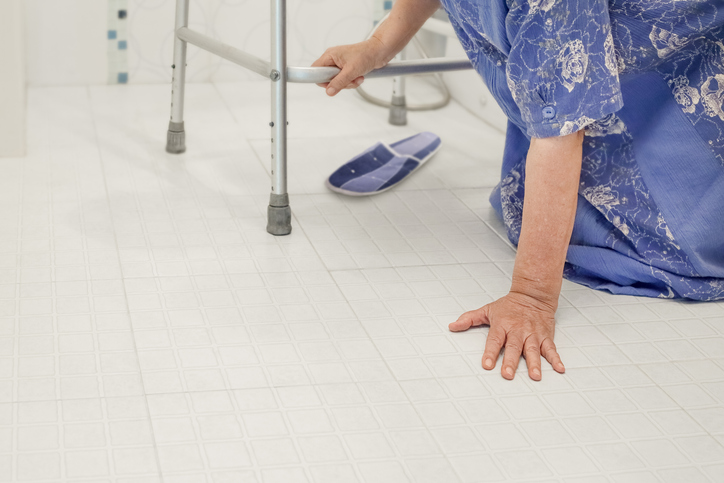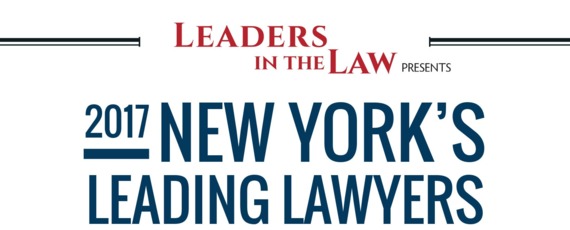
A slip and fall injury at any age can leave victims with lasting complications and financial hardships. Falls are the second leading cause of accidental death after motor vehicle accidents—and responsible for millions of emergency room visits each year. Whether attributed to uneven pavement, slick floors, or negligent maintenance, slip and fall accidents can be life-changing events that call for qualified legal representation.
If you slipped and were badly hurt on another’s property, you may be eligible for monetary damages. An experienced New York City slip and fall lawyer at Friedman, Levy, Goldfarb & Green can determine if you have a valid claim for compensation.
Your Recovery Is Our Priority. Reach Out to Us for Legal Assistance!
Our New York City personal injury attorneys have obtained significant damage awards for clients who suffered slip and fall injuries through no fault of their own. Reach out to arrange a complimentary case evaluation to learn how we can help you recover and move forward with your life. Our legal team is proud to serve residents throughout New York City, Brooklyn, the Bronx, and Long Island.
Common Slip and Fall Injuries
The following are among the most common injuries suffered in slip, trip and fall accidents:
- Soft tissue injuries – Soft tissue injuries, which involve the muscles, ligaments, and tendons, might not be obvious in the immediate aftermath. Days or weeks may pass after the fall before you notice your neck is stiff, your knee hurts to bend, or you have a bad ankle sprain. Unless there is swelling, pain, or bruising, some soft tissue injuries can go undetected and untreated, adding more risk to later complications and mobility restrictions. Magnetic resonance imaging (MRI) is the best diagnostic tool for detecting soft tissue injuries including injury to the anterior cruciate ligament (ACL) in the knee, which can be torn or stretched during a slip and fall.
- Broken and fractured bones– Fractures of the hip, pelvis, and wrist are some of the most prevalent slip and fall injuries. Depending on the location and severity of the break, this may require a cast, surgery to stabilize the bone with metal rods and screws, and months of physical therapy and rehabilitation. Compound fractures, in which the bone pierces through the skin, are much more dangerous, as there is an immediate risk of infection, tissue damage, and internal bleeding. Hip fractures are particularly serious among the elderly, who have a greater risk of losing their independence often with fatal complications within 12 months of the injury.
- Head, skull, and brain injuries – Even minor bumps should be treated as a medical emergency. Concussions are a prime example, since this type of traumatic brain injury (TBI) can have lasting implications both physically and emotionally for many years. More serious TBIs can permanently impair cognitive abilities, motor coordination and affect vision and speech. Traumatic brain injury cannot be diagnosed on symptoms alone, which is why it’s imperative to seek medical attention after any slip and fall accident.
- Spinal cord injury (SCI) – Falls are one of the leading causes of spinal cord injury and can be life-threatening. Any damage to the spinal cord or nerves can produce what are known as “complete” or “incomplete” injuries. The location and severity of the damage will determine the prognosis. In worst-case scenarios, victims may be paralyzed from the waist down (paraplegia) or lose all feeling and movement throughout the body (tetraplegia).
- Back injuries – More serious back injuries can lead to a life of chronic pain and mobility restrictions. Falling on your back or in a twisted position can cause the discs between the vertebrae to slip out of place (herniated disc) or become compressed. In addition, the bony vertebra can suffer compression fractures. Numbness and tingling that radiates down the legs are typical symptoms of compressed and herniated discs.
- Shoulder injury – When shoulder ligaments and tendons are stretched beyond their normal limits, this can result in injury and instability. Falling onto an outstretched hand may result in a torn rotator cuff or brachial plexus injury. The brachial plexus is a network of nerves connecting the spinal cord to the shoulder, arm, and hand. These painful injuries may require months of physical therapy to rehabilitate the injured limb and joint.
- Abrasions and cuts – Deep lacerations in the hands and forearms are common in slip and fall accidents because victims instinctively try to break the fall by reaching out their hands. Depending on the force of the fall and the floor surface, these cuts can cause severe bleeding, damage underlying nerves, and pose a risk for infection. Severe cuts and bleeding are more prevalent in older adults whose skin is thinner and more fragile.
Injured in a Slip and Fall? Let Us Fight for Your Rights!
Factors That Impact a Slip and Fall Injury
Slip and fall incidents affect the young and old alike, but no two people will suffer the same injuries. The following factors will play a large role in the type of injury sustained:
- Age and overall physical condition– the victim’s age, gender, and overall health will have some impact on the injury sustained. Those who have balance difficulties due to prescription medications, vision problems, or age are more likely to slip and fall. Research shows that women over the age of 55 are more likely to suffer pelvis or hip fractures than men of the same age. People aged 85 or older are 10 ten times more likely to suffer a hip fracture than those aged 60-65. Of all fall-related deaths in the United States, 60 percent are victims aged 70 or older.
- Position at landing– most people will reflexively attempt to break a fall with an outstretched arm or hand. A fall that may have resulted in a fractured tail bone could result in a broken wrist or hand instead.
- Impact on floor surface– slips, trips, and tumbles can result in debilitating injury depending on how fast, and hard the body impacts the ground surface. Someone who slips on an icy sidewalk could easily fracture their skull on the hard pavement.
Symptoms to Watch for After a Slip and Fall
Here at Friedman, Levy, Goldfarb, Green & Bagley, P.C., we cannot stress the importance of seeking prompt medical attention. While bleeding, swelling, and acute pain are obvious signs of injury, many cases have no outward signs and must be diagnosed by a medical professional. Be your own advocate and pay attention to subtle symptoms of a possible concussion, herniated disc, soft tissue injury, or other kinds of physical harm.
Signs and symptoms to look for include:
- Muscle spasms
- Localized or radiating pain
- Pain worsening with specific movement
- Weakness or numbness in the legs
- Nausea
- Persistent headaches
- Light sensitivity
- Fatigue
- Memory loss
- Visual disturbances
Turn Your Slip and Fall into a Step Towards Justice. Contact Us Today!
Steps to Take After a Slip and Fall Accident
There should be no confusion about what to do after a slip and fall accident. Take the following steps to preserve your rights:
- Report the accident to the property owner or appropriate authorities
- Seek medical treatment as soon as possible
- Take photos of where you fell and the hazard that caused the accident
- Get contact information of any eyewitnesses
- Keep the shoes you were wearing at the time of the fall
- Save receipts for out-of-pocket expenses related to the accident
- Consult an attorney about filing a trip and fall injury claim
What Defenses Do Property Owners Use in Slip and Fall Accident Cases
A property owner or manager is not automatically at fault when you are hurt in a fall on their property. It is not uncommon for defendants in a slip and fall lawsuit to raise one or more defenses that you and your personal injury lawyer will need to address or rebut:
Those defenses include the following:
- The owner did not know and had no way of knowing about a dangerous property condition
- The injured party contributed to their losses by not taking reasonable precautions to prevent the accident
- The condition that caused the accident and injuries was open and obvious, but the injured party ignored or disregarded it
- The accident was caused by a trivial or insignificant defect or hazard at the property.
In addition, a property owner might have procedural defenses. These will cause a lawsuit to be dismissed regardless of liability. For example, the plaintiff filed a lawsuit more than three years after the accident occurred—which violates the state’s statute of limitations. Further, shorter two-phase deadlines apply if the accident happened on property owned by the state or any of its cities or municipalities. First, the injured party must submit a notice of their claim within ninety days after the accident. Then they must file a slip and fall lawsuit within one year and ninety days after the accident. Again, if these deadlines are not met, the case will be dismissed.
The available evidence in your case will prove whether the property owner was liable and whether any of the owner’s defenses will excuse that liability. That evidence might include photographs of the hazardous condition, property inspection and repair logs, surveillance video capturing the accident, eyewitness reports, and testimony from the injured party and the property owner.
Your Recovery Is Our Priority. Reach Out to Us for Legal Assistance!
In addition to proving the property owner’s liability and disproving any defenses that the owner might present, you will also need to show evidence of the damages you suffered because of that liability. The owner can challenge this as well. They can claim, for example, that your injuries were the result of a pre-existing condition or that your conduct and activities after your accident show that you were not subject to excessive pain and suffering.
Your best strategy to overcome a property owner’s defenses to your slip and fall claims is to retain an attorney as soon as possible. They will then be better able to gather evidence and establish a strong case to defeat those defenses.
What Is the Statute of Limitations in New York for a Slip and Fall Accident?
A statute of limitations is the time limit set by each state for the filing of a civil lawsuit. After this period, the court will not consider the claim. The statute of limitations in New York for filing a personal injury lawsuit is three years from the date of the incident.
There are exceptions to the three-year statute of limitations. If the slip and fall accident took place on public property, time limits are much shorter. You have just 90 days to file a Notice of Claim for personal injury on public properties in New York City.
On rare occasions, a slip-and-fall accident proves fatal. Surviving family members are eligible to file a wrongful death lawsuit against the defendant. The statute of limitations for filing a wrongful death lawsuit is two years from the death date, not the date of the issue causing the death.
Although you need time to recuperate from your slip and fall injury, do not delay seeking legal counsel. Waiting until the statute of limitations expiration date is approaching means it is harder to collect evidence, and you need strong evidence in a slip and fall claim.
You also must make sure that your fall did not occur on public property. Injured parties may think the accident happened on private property, only to find out too late that a public entity was involved. A slip and fall attorney will verify ownership of the property in question. An experienced slip and fall attorney makes sure clients do not miss any of these deadlines.
Legal Help When You Need It
Fully recovering from a slip and fall accident can take weeks, months, or even years. Medical professionals will design a treatment plan according to individual needs. Depending on the situation, this may entail medication, surgery, ultrasound or electrical muscle stimulation, chiropractic care, spinal decompression therapy, or rehabilitation exercises.
More debilitating injuries will incur higher costs – physically, emotionally, and financially. Our attorneys have the resources and skill to prove liability and ensure our clients are appropriately compensated for their losses.
Our legal team is here to guide and support injury victims and answer slip and fall FAQs with candor and honesty. We don’t make false promises about the value of your case until we have all the facts and maximum medical improvement has been reached.
NYC Slip and Fall Lawyers
The law firm of Friedman, Levy, Goldfarb & Green provides tenacious advocacy for slip and fall injury victims. Explore your options for legal recourse by reaching out for a no-obligation consultation with an NYC slip and fall lawyer today. Since we operate on a contingency basis, there is no financial risk and only collect compensation if we win or settle your claim.






